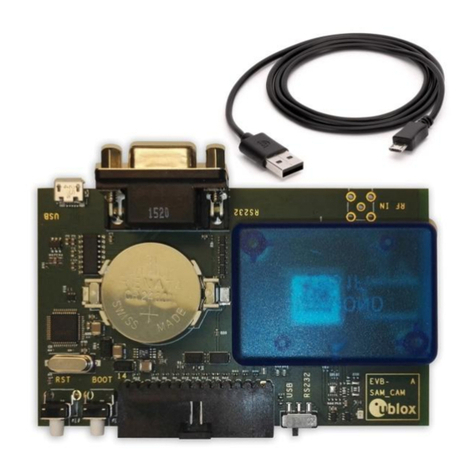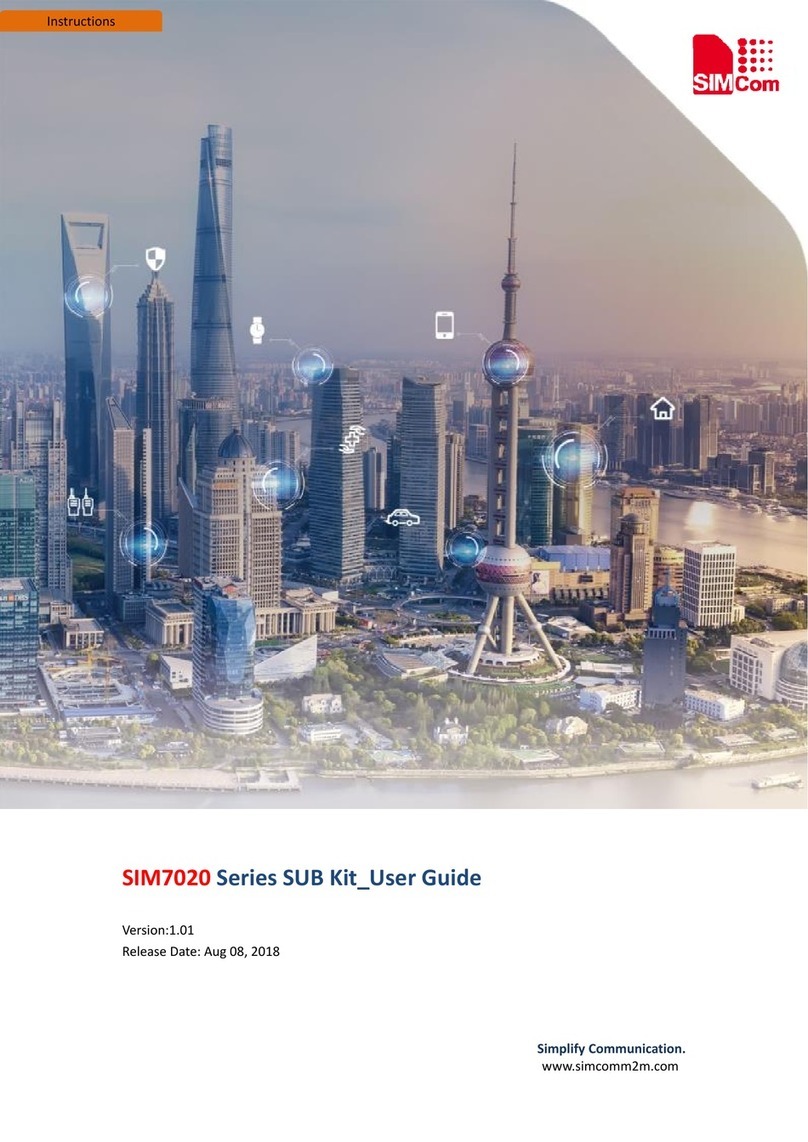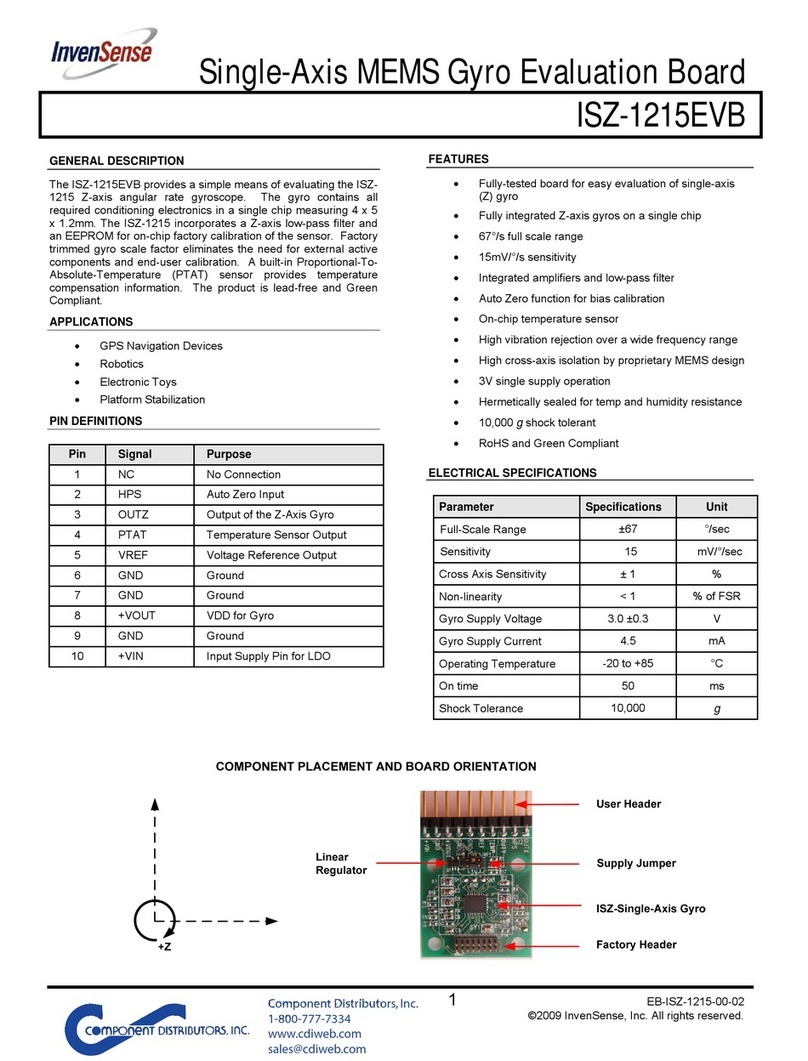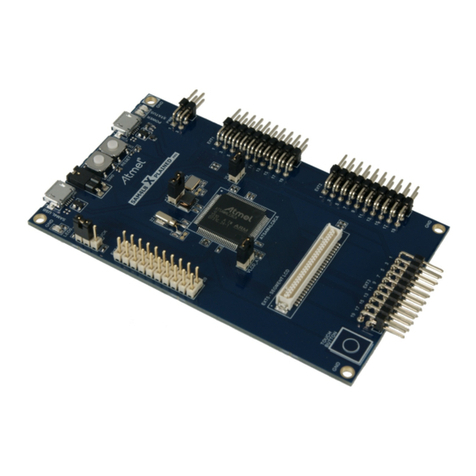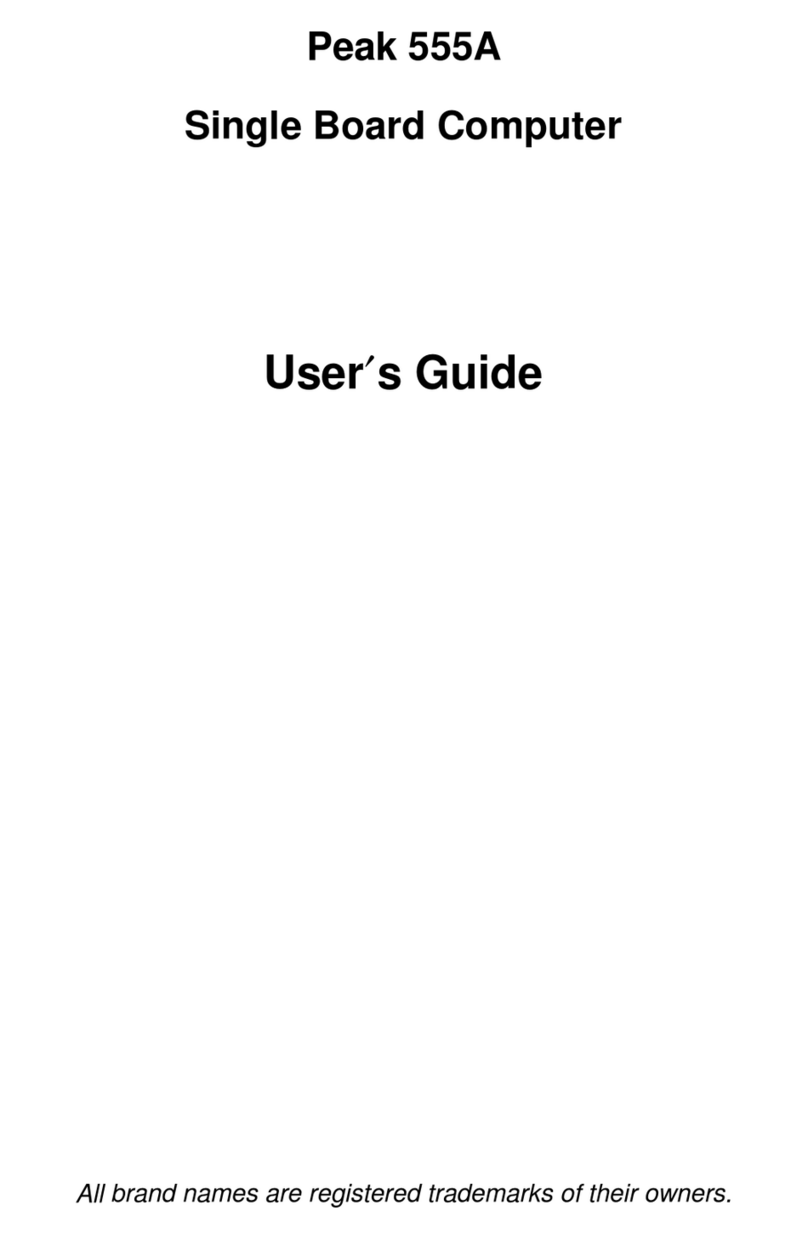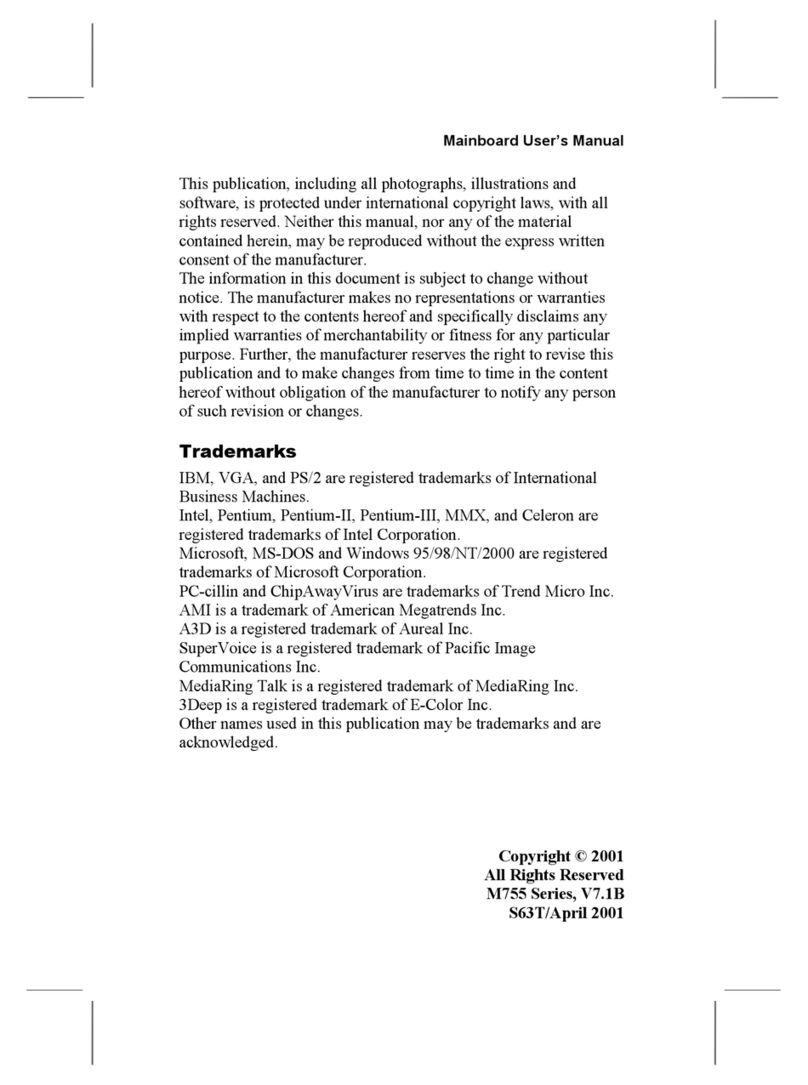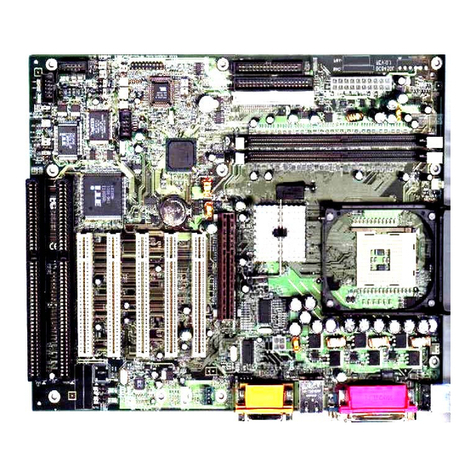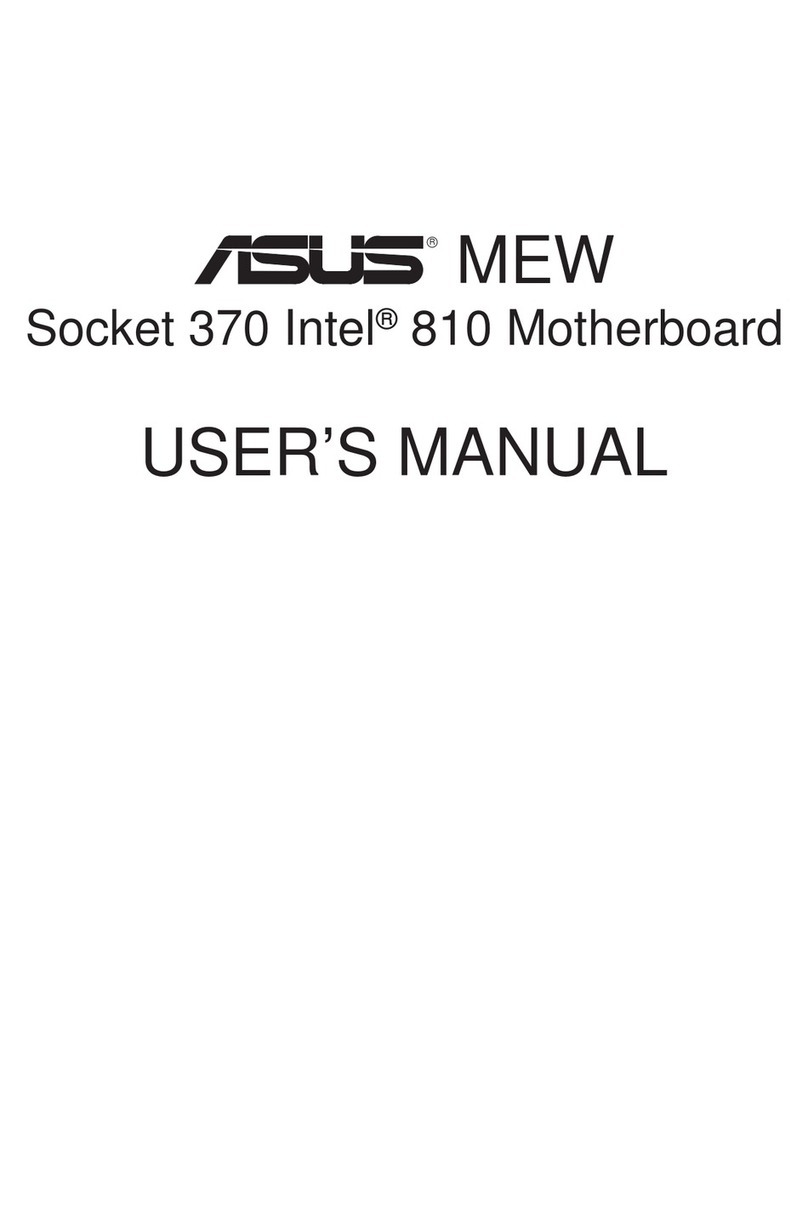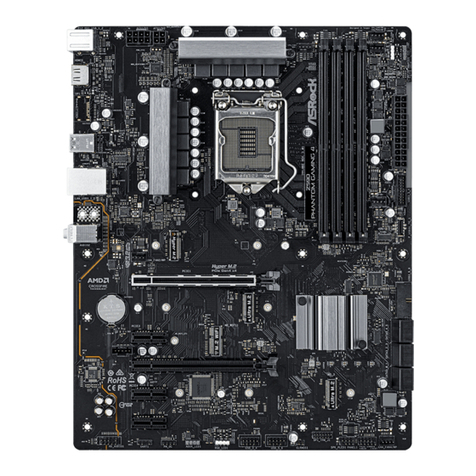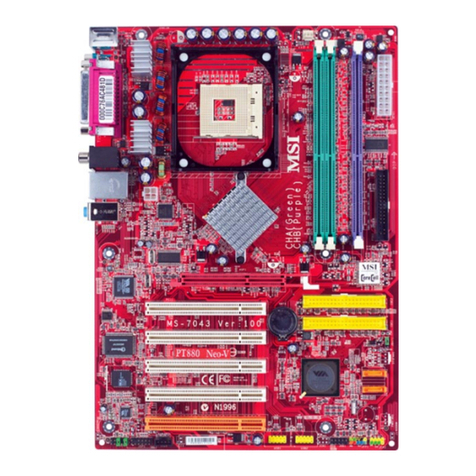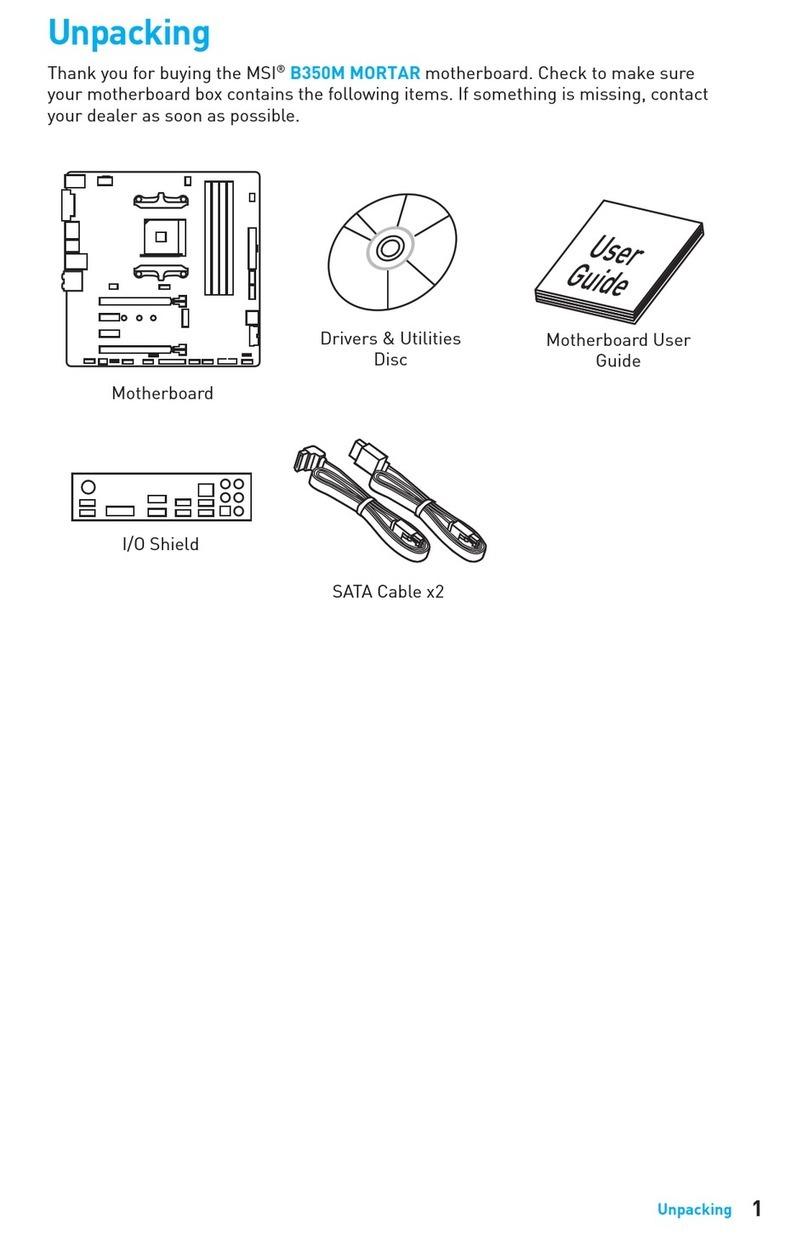Cinterion DSB75 Guide

DSB75
Development Support Board
Rev. B1
Version: v12
DocID: DSB75_hd_v12
Hardware Description

DSB75 Development Support Board Rev. B1 Hardware Description
Confidential / Released
DSB75_hd_v12 Page 2 of 96 2008-08-26
Document Name: DSB75 Development Support Board Rev. B1
Hardware Description
Version: v12
Date: August 26, 2008
DocId: DSB75_hd_v12
Status: Confidential / Released
GENERAL NOTE
THE USE OF THE PRODUCT INCLUDING THE SOFTWARE AND DOCUMENTATION (THE
"PRODUCT") IS SUBJECT TO THE RELEASE NOTE PROVIDED TOGETHER WITH PRODUCT. IN
ANY EVENT THE PROVISIONS OF THE RELEASE NOTE SHALL PREVAIL. THIS DOCUMENT
CONTAINS INFORMATION ON CINTERION PRODUCTS. THE SPECIFICATIONS IN THIS
DOCUMENT ARE SUBJECT TO CHANGE AT CINTERION'S DISCRETION. CINTERION WIRELESS
MODULES GMBH GRANTS A NON-EXCLUSIVE RIGHT TO USE THE PRODUCT. THE RECIPIENT
SHALL NOT TRANSFER, COPY, MODIFY, TRANSLATE, REVERSE ENGINEER, CREATE
DERIVATIVE WORKS; DISASSEMBLE OR DECOMPILE THE PRODUCT OR OTHERWISE USE
THE PRODUCT EXCEPT AS SPECIFICALLY AUTHORIZED. THE PRODUCT AND THIS
DOCUMENT ARE PROVIDED ON AN "AS IS" BASIS ONLY AND MAY CONTAIN DEFICIENCIES OR
INADEQUACIES. TO THE MAXIMUM EXTENT PERMITTED BY APPLICABLE LAW, CINTERION
WIRELESS MODULES GMBH DISCLAIMS ALL WARRANTIES AND LIABILITIES. THE RECIPIENT
UNDERTAKES FOR AN UNLIMITED PERIOD OF TIME TO OBSERVE SECRECY REGARDING
ANY INFORMATION AND DATA PROVIDED TO HIM IN THE CONTEXT OF THE DELIVERY OF
THE PRODUCT. THIS GENERAL NOTE SHALL BE GOVERNED AND CONSTRUED ACCORDING
TO GERMAN LAW.
Copyright
Transmittal, reproduction, dissemination and/or editing of this document as well as utilization of its
contents and communication thereof to others without express authorization are prohibited. Offenders
will be held liable for payment of damages. All rights created by patent grant or registration of a utility
model or design patent are reserved.
Copyright © 2008, Cinterion Wireless Modules GmbH

DSB75 Development Support Board Rev. B1 Hardware Description
Confidential / Released
DSB75_hd_v12 Page 3 of 96 2008-08-26
Contents
0Document History ...................................................................................................... 7
1Introduction...............................................................................................................12
1.1 Supported Products ...........................................................................................12
1.2 Related Documents............................................................................................12
1.3 Scope of Delivery...............................................................................................13
1.3.1 Standard package DSB75 Development Support Board ......................13
1.3.2 Product specific accessories ................................................................13
1.4 Terms and Abbreviations ...................................................................................14
2General Overview......................................................................................................16
2.1 Key Features at a Glance ..................................................................................16
2.2 System Overview ...............................................................................................18
2.3 Location of Connectors, Switches, Jumpers, LEDs, Adjustable Resistors..........19
2.4 Block Diagram....................................................................................................20
2.5 Interface Overview .............................................................................................21
3Description of DSB75 Interfaces..............................................................................23
3.1 GSM Module Interface (Board-to-Board Connector) ..........................................23
3.2 Test Points.........................................................................................................25
3.3 GPIO Lines ........................................................................................................27
3.4 SIM Card Interface.............................................................................................29
3.5 RS-232 Interfaces ..............................................................................................31
3.5.1 Serial Interface 1 (COM1).....................................................................33
3.5.2 Serial Interface 2 (COM2).....................................................................34
3.5.3 Debug Interface (COM3) ......................................................................35
3.6 Analog Audio Interfaces.....................................................................................36
3.6.1 Audio Interface 1 (Handset)..................................................................37
3.6.2 Audio Interface 2 (Headset or Speakerphone Operation).....................38
3.6.2.1 Recommended Headset .......................................................38
3.6.2.2 Speakerphone Operation......................................................39
3.6.3 Microphone Circuit (Feeding Bridges) ..................................................40
3.7 Digital Audio Interface........................................................................................41
3.8 USB Device Interface.........................................................................................43
3.9 I²C Interface .......................................................................................................45
3.10 SD Card Interface ..............................................................................................48
3.10.1 SD 4 Bit Mode ......................................................................................50
3.10.2 SD 1 Bit Mode ......................................................................................51
3.10.3 SPI Bus Mode ......................................................................................52
3.11 Serial Peripheral Interfaces................................................................................53
3.12 Analog Interface.................................................................................................55
3.13 Antenna Interface...............................................................................................57
3.14 Power Supply Interfaces ....................................................................................58
3.14.1 Internal Supply Voltages.......................................................................60

DSB75 Development Support Board Rev. B1 Hardware Description
Confidential / Released
DSB75_hd_v12 Page 4 of 96 2008-08-26
3.14.2 Power Supply for DSB75 and GSM Module..........................................62
3.14.3 Battery Powered Operation of GSM Module.........................................63
3.14.3.1 Charging the Battery.............................................................63
3.14.3.2 Charging Circuit....................................................................64
3.14.4 Real Time Clock Supply .......................................................................65
3.14.5 Adjusting the VBATT+ Supply Voltage for the GSM Module.....................66
4Status LEDs...............................................................................................................67
4.1 Indication of Asynchronous Serial Interface Signals...........................................68
4.2 Indication of GPIO Signals and SYNC ...............................................................68
4.3 Indication of Power.............................................................................................69
4.4 Indication of I²C Lines ........................................................................................69
5Overview of Switches and Jumpers........................................................................70
5.1 Overview of Switches.........................................................................................70
5.2 Overview of Jumpers .........................................................................................75
6Connecting Antenna and GSM Module to DSB75...................................................77
7Turn on / off the GSM Module ..................................................................................79
7.1 Turn on the GSM Module...................................................................................79
7.2 Turn off the GSM Module...................................................................................80
7.3 Emergency Restart ............................................................................................80
8Technical Data of DSB75..........................................................................................81
8.1 Cable Requirements ..........................................................................................84
9Appendix....................................................................................................................85
9.1 List of Parts and Accessories.............................................................................85
9.2 Circuit Diagrams of DSB75 ................................................................................86
9.3 Floor Plan of the DSB75 ....................................................................................95
Figures
Figure 1: System overview ...................................................................................................18
Figure 2: Location of the connectors, switches, jumpers, LEDs and adjustable resistors .....19
Figure 3: Block diagram .......................................................................................................21
Figure 4: Pin assignment of the B2B connector ...................................................................23
Figure 5: Overview of B2B connector pins and the corresponding test points ......................25
Figure 6: Location of the test points .....................................................................................25
Figure 7: GPIO circuit...........................................................................................................27
Figure 8: GPIO - location of switches and LEDs...................................................................28
Figure 9: SIM card interface.................................................................................................29
Figure 10: Pin location of the Molex SIM card holder and test pins ......................................30
Figure 11: RS-232 interfaces ...............................................................................................31
Figure 12: Location of the RS-232 interfaces and switches..................................................32

DSB75 Development Support Board Rev. B1 Hardware Description
Confidential / Released
DSB75_hd_v12 Page 5 of 96 2008-08-26
Figure 13: Recommended adapter cable from PC to COM2 on DSB75 ...............................35
Figure 14: Analog audio interface – overview.......................................................................36
Figure 15: Location of the audio connectors and switches ...................................................37
Figure 16: Siemens Car Kit Portable HKP-500.....................................................................39
Figure 17: Circuit of microphone feeding bridges .................................................................40
Figure 18: DAI interface .......................................................................................................41
Figure 19: Location and pin assignment of the DAI connector X703 ....................................41
Figure 20: Example for connecting measurement equipment...............................................42
Figure 21: USB device interface...........................................................................................43
Figure 22: Location of the USB interface, switches and jumper ...........................................44
Figure 23: I²C interface ........................................................................................................46
Figure 24: I²C interface location ...........................................................................................46
Figure 25: SD card interface ................................................................................................48
Figure 26: Location of slide switches and card reader pins ..................................................49
Figure 27: SPI interfaces......................................................................................................53
Figure 28: SPI interfaces location and related switches .......................................................54
Figure 29 PWM filter characteristics.....................................................................................55
Figure 30: Analog interface location and related switches....................................................55
Figure 31: Analog interface ..................................................................................................56
Figure 32: Power supply interfaces ......................................................................................58
Figure 33: Location of the power supply connectors, switches and jumpers.........................59
Figure 34: Input circuit schematic (5V DC/DC converter) for power supply ..........................60
Figure 35: Schematic for audio supply (5V0_I).....................................................................61
Figure 36: Schematic for GSM module supply (3V3_4V5 or BATT+) ...................................61
Figure 37: Battery screw terminal.........................................................................................63
Figure 38: Schematic of charging circuit ..............................................................................65
Figure 39: Location of jumpers and resistors for adjusting BATT+ voltage (3V3_4V5).........66
Figure 40: Location of LEDs.................................................................................................67
Figure 41: ASC signal indication circuit ................................................................................68
Figure 42: GPIO signal indication circuit...............................................................................69
Figure 43: Location, signal names and switch positions of the slide switches ......................74
Figure 44: Location of jumpers.............................................................................................76
Figure 45: Illustration of positions to cut the trace for jumpers X203 and X122 ....................76
Figure 46: Mounting GSM module (MC75, TC63, TC65) onto the DSB75............................77
Figure 47: Top view on DSB75 with connected GSM module (MC75, TC63 or TC65) and RF
cable .............................................................................................................................78
Figure 48: Turn on circuit .....................................................................................................79
Figure 49: Schematic of page signals ..................................................................................86
Figure 50: Schematic of position list.....................................................................................87
Figure 51: Schematic sheet 1 – B2B connector, test points, USB interface..........................88
Figure 52: Schematic sheet 2 – ASC0, ASC1 and ASC2 interface.......................................89
Figure 53: Schematic sheet 3 – SD card reader...................................................................90
Figure 54: Schematic sheet 4 – GPIOs, power supply .........................................................91
Figure 55: Schematic sheet 5 – SIM card, I2C, SPI, analog and antenna interface..............93
Figure 56: Schematic sheet 6 – charging interface...............................................................93
Figure 57: Schematic sheet 7 – audio interface....................................................................94
Figure 58: Floor plan top side...............................................................................................95
Figure 59: Floor plan bottom side.........................................................................................96

DSB75 Development Support Board Rev. B1 Hardware Description
Confidential / Released
DSB75_hd_v12 Page 6 of 96 2008-08-26
Tables
Table 1: Standard package DSB75 Development Support Board ........................................13
Table 2: Terms and abbreviations ........................................................................................14
Table 3: Key features ...........................................................................................................16
Table 4: Interfaces of the DSB75 .........................................................................................21
Table 5: Pin assignment of B2B connector X100 .................................................................24
Table 6: Pin assignment – B2B connector X100 and test points X101 .................................26
Table 7: Pin assignment – B2B connector X100 and test points X102 .................................26
Table 8: LED indication of GPIO status................................................................................27
Table 9: GPIO assignment and switch position ....................................................................28
Table 10: Pin assignment – SIM card holder X503 and test pins X501 ................................30
Table 11: Pin assignment of 1st serial interface COM1 (X201) ............................................33
Table 12: Pin assignment of 2nd serial interface COM2 (X202) ...........................................34
Table 13: Pin assignment of debug interface COM3 (X205).................................................35
Table 14: Pin assignment of handset audio interface 1 (X502) ............................................37
Table 15: Pin assignment of audio interface 2 (X700, X701)................................................38
Table 16: Pin assignment of the USC/DAI interface X703....................................................42
Table 17: Pin assignment of USB device interface X110......................................................44
Table 18: Pin assignment of the I²C interface X511 .............................................................47
Table 19: Pin assignment of SD card interface X301 (SD 4 bit mode) .................................50
Table 20: Pin assignment of SD card interface X301 (SD 1 bit mode) .................................51
Table 21: Pin assignment of SD card interface X301 (SPI bus mode)..................................52
Table 22: Alternative configuration of SPI interface lines......................................................53
Table 23: Pin assignment of the SPI interfaces X510...........................................................54
Table 24: Pin assignment of the analog interface.................................................................56
Table 25: Description of power supply units .........................................................................60
Table 26: Recommended specification of the laboratory PSU..............................................62
Table 27: Connecting the laboratory PSU to X400 and X401...............................................62
Table 28: Pin assignment of the screw terminal X602..........................................................63
Table 29: Pin assignment of the X700 jack for the plug-in charger.......................................64
Table 30: Pin assignment of the X701 jack for the plug-in charger.......................................64
Table 31: Adjusting BATT+ voltage (3V3_4V5) ....................................................................66
Table 32: Overview of switch positions.................................................................................70
Table 33: Overview of jumpers.............................................................................................75
Table 34: DSB75 maximum ratings......................................................................................81
Table 35: DSB75 technical data ...........................................................................................81
Table 36: List of parts and accessories ................................................................................85

DSB75 Development Support Board Rev. B1 Hardware Description
Confidential / Released
DSB75_hd_v12 Page 7 of 96 2008-08-26
0 Document History
Preceding document: "DSB75 Development Support Board Rev B1 Hardware Description", v11
New document: "DSB75 Development Support Board Rev. B1 Hardware Description" Version v12
Chapter What is new
1.1 Added further supported products.
1.3 Added notes on product specific cables.
3.7 Further detail on pin assignment of DAI connector X703 and Master/Slave mode.
6 Added notes on product specific mounting requirements.
Preceding document: "DSB75 Development Support Board Rev B1 Hardware Description", v10
New document: "DSB75 Development Support Board Rev. B1 Hardware Description" Version v11
Chapter What is new
1.3 Deleted antenna adapter cable in Table 1 .
Added note on extra cables needed for AC75 only.
6 Added note for AC75 only.
Preceding document: "DSB75 Development Support Board Rev B1 Hardware Description", v09
New document: "DSB75 Development Support Board Rev. B1 Hardware Description" Version v10
Chapter What is new
3.5 Replaced Figure 11
3.9 Table 3: Added remark on recommended pull-up resistor.
3.12 Updated Figure 31 and Table 24 (changed X101/34 to X101/33)
8 Updated min/typical values of I²C pull-up resistor.
9.1 Added ordering number for DSB75.
Preceding document: "DSB75 Development Support Board Rev B1 Hardware Description", v08
New document: "DSB75 Development Support Board Rev. B1 Hardware Description" Version v09
Chapter What is new
2.4 Figure 3: Corrected specification of GPIO7 and GPIO8
3.3 Figure 7, Table 9: Corrected descriptions of pins 6 and 8 (X100).
3.12 “Figure 31: Analog interface” and “Table 24: Pin assignment of the analog interface”
corrected names of analog input 1and analog input 2
5.1 Table 32: Overview of switch positions – corrected descriptions of switches S456 and
S457
9.2 Figure 49, Figure 51, Figure 54 and Figure 55 – changed names of the following
signals:
•AD1_IN -> ADC1_IN
•AD2_IN -> ADC2_IN

DSB75 Development Support Board Rev. B1 Hardware Description
Confidential / Released
DSB75_hd_v12 Page 8 of 96 2008-08-26
Chapter What is new
•GPIO7 -> SPICS
•GPIO7_I -> SPICS_I
•GPIO7_SPI -> SPI1_CS
•GPIO8 -> SPIDI
•GPIO8_I -> SPIDI_I
•GPIO8_SPI -> SPI1_DI
Preceding document: "DSB75 Development Support Board Rev B1 Hardware Description", v07
New document: "DSB75 Development Support Board Rev. B1 Hardware Description" Version v08
Chapter What is new
3.6.2 Added description of EPREF.
3.6.2.2,
3.6.3
Added information about required bias voltage for speakerphone operations.
3.7 Table 16: Updated pin description of PCM interface.
Preceding document: "DSB75 Development Support Board Rev B1 Hardware Description", v06
New document: "DSB75 Development Support Board Rev. B1 Hardware Description" Version v07
Chapter What is new
7.1 Modified section “Toggling low-high state of DTR”.
8 Table 35: DSB75 technical data: Added Ignition key, Emergency key, Ignition via DTR,
Ignition via USB
Preceding document: "DSB75 Development Support Board Rev B1 Hardware Description", v05
New document: "DSB75 Development Support Board Rev. B1 Hardware Description" Version v06
Chapter What is new
9.2 Figure 56: Schematic sheet 6 – charging interface – corrected value of R604
Preceding document: "DSB75 Development Support Board Rev B1 Hardware Description", v04
New document: "DSB75 Development Support Board Rev. B1 Hardware Description" v05
Chapter What is new
2.2 Modified Figure 2: Location of the connectors, switches, jumpers, LEDs and adjustable
resistors
3.1 Corrected Table 5: Pin assignment of B2B connector X100 and Table 6: Pin
assignment – B2B connector X100 and test points X101
Board-to-board connector X100 will be supplied by Molex
3.3 Added note that the status of GPIOs 1 – 6 and 9 – 10 will be indicated by LEDs.
Deleted test pin X102 for connecting measurement equipment or an external
application. Corrected Table 9: GPIO assignment and switch position
3.5.1 Table 11: Pin assignment of 1st serial interface COM1 (X201) – modified note on DTR line
3.11 Table 22: Alternative configuration of SPI interface lines – deleted GPIO as alternative

DSB75 Development Support Board Rev. B1 Hardware Description
Confidential / Released
DSB75_hd_v12 Page 9 of 96 2008-08-26
Chapter What is new
interface
Table 23: Pin assignment of the SPI interfaces X510 – corrected pin names
5.1 Table 32: Overview of switch positions – corrected the functions of several switches
Preceding document: "DSB75 Development Support Board Rev B1 Hardware Description", v03
New document: "DSB75 Development Support Board Rev. B1 Hardware Description" v04
Chapter What is new
1.4 Updated table: “Terms and Abbreviations”
2.5 Deleted “for ORGA test device” in table 2, row “SIM”
3.3 Deleted line: “It is important to switch the used GPIO lines to the LED driver (S450 –
S459 pos.3).”
3.6.2 Updated table 12. Added description for pin 1 – 8 (X700), pin 1 – 7, 9 (X701)
3.6.2.2 Added “The plug of “Siemens Car Kit portable HKP-500” is compatible to Lumberg
connector X701. The plug of “Siemens Car Kit Portable” is compatible to Lumberg
connector X700.
3.6.3 Modified figure: ”Circuit of microphone feeding bridges”
3.8 Corrected switch position for a direct connection of the USB lines to the GSM module.
Table 14: deleted column “Remark”
3.9 Deleted section “I2C is a serial, 8-bit oriented data transfer bus for bit rates up to 400
kbps in Fast mode. It consists of two lines: the serial data line I²CDAT and the serial
clock line I²CCLK. The electrical characteristics comply with the I²C standard.”
Deleted section “A master is the device which initiates a data transfer on the bus and
generates the clock signals to permit that transfer. At this time, any device addressed
is considered a slave. The master can operate as a master transmitter or as a master
receiver.”
Changed: VEXT to VDD
Modified figure: “I²C interface”
Corrected table 15: Pin assignment of the I²C interface X511
3.10 Modified figures: “SD card interface” and “Location of slide switches”
3.11 Modified figure: “SPI interfaces”
Corrected figure: “SPI interfaces location and related switches”
3.12 Deleted list item “The filter characteristic depends on the signal frequency range.”
Added new figure: “PWM filter characteristics”
Modified figures: “Analog interface” and “Analog interface location and related
switches”
3.14 Modified figure: “Power supply interfaces”
3.14.1 Corrected Table 25, row “GSM module supply”: 4.7F to 4700µF.
3.14.3.2 Modified figure: “Schematic of charging circuit”
3.14.5 Replaced “slide switches” with “jumpers”
Deleted constraints: “The maximum voltage is set only via the slide switches, it cannot
be adjusted via the resistors.
4.1 Modified figure: “ASC signal indication circuit”
4.2 Modified figure: “GPIO signal indication circuit”

DSB75 Development Support Board Rev. B1 Hardware Description
Confidential / Released
DSB75_hd_v12 Page 10 of 96 2008-08-26
Chapter What is new
9.2 Added figures: “Schematic of page signals” and “Schematic of position list”
Modified figure: “Schematic sheet 6 – charging interface”
Preceding document: ”DSB75 Development Support Board Hardware Description", v02
New document: "DSB75 Development Support Board Rev. B1 Hardware Description" v03
Chapter What is new
2.2 Modified figure: “System overview”
2.3 Modified figure: “Placement of connectors, switches, jumpers, LEDs and adjustable
resistors”
2.4 Modified figure: “Block diagram”
3.3 Modified figure: “GPIO circuit”
3.5.1 Corrected value of level converter D200 (COM1). Added information: “Therefore the
PWR_IND signal is used for enabling and shut down converters.”
3.5.2, 3.5.3 Corrected value of level converter D201 (COM2, COM3). Added information:
Therefore the PWR_IND signal is used for enabling and shut down converters.
3.6 Modified figure: “Analog audio interface – overview”; modified figure: “Location of the
audio connectors and switches”
3.6.2.2 New speakerphone added.
3.8 Added information about second USB interface X111. Modified figure: “USB device
interface”.
3.9 Added information about functionality of LEDs V503, V504. Modified figure: ”I²C
interface”.
3.10 Modified figure: ”SD card interface”
3.12 Modified figure: ”Analog interface”
3.14 Modified figure: ”Power supply interface”
3.14.1 Modified information in Table 25, row “Power supply of digital part of DSB75”. Added
new row in Table 25: “Digital IO supply (VDD)””
3.14.2 Corrected information about power indication.
3.14.3 Changed information about battery operation. Added recommendations for batteries.
3.14.3.1 Added ordering number and technical data for plug-in charger. Added new table: “Pin
assignment of the X701 jack for the plug-in charger”.
3.14.3.2 Corrected: Imax=150mV / 0.3Ohm = 500mA @ Jumper X600 open;
Imax =150mV / 0.15Ohm =1A @ Jumper X600 closed
Modified figure: “Schematic of charging circuit”.
3.14.4 New chapter: “Real Time Clock Supply”
4.2 Modified information about indication of GPIO signals. Modified figure: “GPIO signal
indication circuit”.
4.3 Corrected information about indication of power.
4.4 New chapter: “Indication of I²C Lines”
5.1 Completely updated table: “Overview of switch positions”.

DSB75 Development Support Board Rev. B1 Hardware Description
Confidential / Released
DSB75_hd_v12 Page 11 of 96 2008-08-26
Chapter What is new
5.2 Table 33: added jumpers X122, X203, X204, X206, X420, X421 X562, X600 and
footnotes 2, 3. Added figure: “Location of jumpers”.
6 Added mounting description and figure: “Mounting GSM module onto the DSB75”.
7.1 Deleted constraints: “Start-up by DTR0 toggling is only effective if the USB host is not
active. Start-up by plugging the USB cable is only effective if the RS-232 lines are
deactivated by the host application (e.g. if the terminal program is closed). In later
releases of DSB75 this problem will be solved.” Modified figure: “Turn on circuit”.
7.2 Added information about automatic restart of the module.
8 Updated technical data.
8.1 More detailed list of cable requirements.
9.2 Modified figures “Schematic sheet1” … “Schematic sheet7”
9.3 Modified figure: “Floor plan top side”; added figure: “Floor plan bottom side”
Preceding document: ”DSB75 Development Support Board Hardware Description", v01
New document: ”DSB75 Development Support Board Hardware Description", v02
Chapter What is new
Completely revised and updated all chapters and technical specifications. Added new chapters and
appendix.

DSB75 Development Support Board Rev. B1 Hardware Description
Confidential / Released
DSB75_hd_v12 Page 12 of 96 2008-08-26
1 Introduction
This document describes the
DSB75 Development Support Board
Rev. B1
The DSB75 Development Support Board is designed to assist system integrators in
developing and evaluating products based on Cinterion Wireless Modules. Furthermore, it is
part of the reference equipment submitted for Type Approval GSM modules.
This document describes all interfaces of the DSB75, provides technical specifications and
presents guidelines for connecting and operating the GSM modules to be evaluated.
At present, the DSB75 has not been approved to comply with the CE marking regulations
and can be used for laboratory purposes only. Also, please note that the DSB75 and the
connected GSM module are not ESD protected. Because of these current limitations, take
care that the device is only used by authorized staff.
Note: The document is only valid for the DSB75 Rev. B1. DSB75 Rev. A2 boards are no
longer considered in the document.
1.1 Supported Products
DSB75 comes as a universal evaluation kit for variety of different Cinterion wireless
modules. At present these are the following:
MC75
MC75i
TC63
TC63i
TC65
TC65i
AC65
AC75
XT65
XT75
The diversity of the supported products implies that, due to hardware or software specific
properties, major differences occur regarding the availability of interfaces and the
implementation of features. Therefore, please consult the specifications supplied with your
module, especially [1] and [2], to make sure whether or not a described interface, signal,
operating mode or function offered by the DSB75 is supported.
1.2 Related Documents
[1] Hardware Interface Description of your GSM module
[2] AT Command Set of your GSM module
[3] Application Note 02: Audio Interface Design for GSM Applications,
related to your GSM module
[4] Application Note 07: Rechargeable Lithium Batteries in GSM Applications

DSB75 Development Support Board Rev. B1 Hardware Description
Confidential / Released
DSB75_hd_v12 Page 13 of 96 2008-08-26
1.3 Scope of Delivery
1.3.1 Standard package DSB75 Development Support Board
Table 1: Standard package DSB75 Development Support Board
Quantity Description
1 DSB75 Development Support Board
1 MiniMag antenna (850 MHz – 1990 MHz)
2 RF adapter cable 150mm (Hirose – Hirose)
1 Votronic handset
2 Hexagon nuts (DIN 934 – ISO 4032)
2 Screws M2 (DIN 84 – ISO 1207)
2 Insulating spacers for M2, self-gripping
1.3.2 Product specific accessories
Some products require additional cables which are not part of the standard DSB75 package,
but are supplied separately:
AC65, AC75, XT65, XT75:
-Flat flexible cable (100 mm) for connecting
the module to the board-to-board connector
located on the DSB75 board.
AC65, AC75:
-Special GSM adapter cable (200 mm) with Hirose
U.FL-LP-066 and Rosenberger SMP 19K202-270
connectors.
XT65, XT75:
-Active GPS antenna
-Special GPS adapter cable (100 mm) with Hirose
connector and female SMA connector to be connected
to the module and to the active GPS antenna.

DSB75 Development Support Board Rev. B1 Hardware Description
Confidential / Released
DSB75_hd_v12 Page 14 of 96 2008-08-26
1.4 Terms and Abbreviations
Table 2: Terms and abbreviations
Abbreviation Description
ADC Analog-to-Digital Converter
ASC Asynchronous Serial Controller
B2B Board-to-Board connector
CE Conformité Européene (European Conformity)
CSD Circuit Switched Data
CTS Clear to Send
DAC Digital-to-Analog Converter
DAI Digital Audio Interface
DRX Discontinuous Reception
DSB Development Support Board
DSR Data Set Ready
DTR Data Terminal Ready
DTX Discontinuous Transmission
EMC Electromagnetic Compatibility
ESD Electrostatic Discharge
GPIO General Purpose Input/ Output
GPRS General Packet Radio Service
GSM Global Standard for Mobile Communications
IGT Ignition
I/O Input/Output
kbps kbits per second
LDO Low Drop Out Regulator
LED Light Emitting Diode
Li-Ion Lithium-Ion
MMC Multi Media Card
NTC Negative Temperature Coefficient
PCB Printed Circuit Board
PCM Pulse Code Modulation
PSU Power Supply Unit
PTT Push-To-Talk
PWM Pulse Width Modulation
RF Radio Frequency
ROM Read-only Memory
RTC Real Time Clock

DSB75 Development Support Board Rev. B1 Hardware Description
Confidential / Released
DSB75_hd_v12 Page 15 of 96 2008-08-26
Abbreviation Description
RTS Request to Send
Rx Receive Direction
SAR Specific Absorption Rate
SCLK Serial Clock
SD Secure Digital
SELV Safety Extra Low Voltage
SIM Subscriber Identification Module
SMA RF connector system: SubMiniature version A
SPI Serial Peripheral Interface
Tx Transmit Direction
USB Universal Serial Bus

DSB75 Development Support Board Rev. B1 Hardware Description
Confidential / Released
DSB75_hd_v12 Page 16 of 96 2008-08-26
2 General Overview
2.1 Key Features at a Glance
Table 3: Key features
Feature Implementation
GSM module interface •Direct connection and mechanical fixing of GSM module via 80-pin
board-to-board connector and screws.
Power supply •Laboratory PSU (9V…15V)
or
•Battery 3.3V…4.5V
Battery charging •Implemented charging circuit (FET)
•Operation with plug-in charging adapter
Antenna interface •Integrated connection between module’s Hirose connector and SMA
connector
SIM interface •SIM card connector with front tray loading and card detection
•Supported SIM cards: 3V and 1.8V
SD Card interface •SD card connector with front slot, card detection indication and write
protection indication
•Supply voltage: 2.9V
•Supported modes:
SD mode or
SPI mode
Audio interfaces •Two analog audio interfaces (both with microphone supply) for
connecting a handset, headset or speakerphone.
•One digital audio interface (DAI)
I²C interface •Host mode
•Supports 3V or 5V devices (configurable)
•Connected I²C EEPROM (128kBit) with adjustable addresses
SPI interface
(option)
•Two interfaces to be used alternatively to other interfaces
•Host mode
Serial interfaces •Three RS-232C interfaces:
COM1 - serial interface for data communication
COM2 - serial interface for control purposes
COM3 - serial interface for debug purposes
•Max. baud rate: 460800 bps
USB interfaces •USB 1.1 Full Speed (12 Mbit/s) device interface at B receptacle (default)
GPIOs •10 GPIOs at pins
•Switchable pull-up/down resistors (for 8 GPIOs)
•LED signaling (for 8 GPIOs)
ADC inputs •2 analog inputs
•Switchable loop with DAC output at each line

DSB75 Development Support Board Rev. B1 Hardware Description
Confidential / Released
DSB75_hd_v12 Page 17 of 96 2008-08-26
Feature Implementation
DAC output •One analog output for DC or AC voltages
•Filtered PWM signal
Signal indication •23 LEDs are available for signal indication
•Two LEDs for on/off indication
Configuration facilities •Several module signal lines have multiple functions (depending on the
GSM module and its configuration). Those lines are switchable to the
right interfaces by slide switches and jumpers.
•Adjustable module supply voltage
Temperature range •Normal operation: 15°C to +35°C
•Storage: -40°C and +85°C
Physical characteristics •Size: 177mm x 160mm x 36mm (PCB)

DSB75 Development Support Board Rev. B1 Hardware Description
Confidential / Released
DSB75_hd_v12 Page 18 of 96 2008-08-26
2.2 System Overview
Antenna
or GSM
tester
ASC0
2 LEDs
for I2C
COM1COM2
PC
COM2 (RS-232C)
COM1 (RS-232C)
Lab
Power
Supply
9V...15V
I2C device
Measurement
equipment
Ignition
Emergency
restart
Handset
SIM
card
Plug-in
charger
LED
DSB On
Battery
ASC1
Power supply
Battery connector
Lumberg
RF
RF
RF cable
Audio
interface 1
Audio interface 2
or charging interface
DSB75
SMA
RF
DAI
interface
Digital audio
measurement
equipment
or codec
X100
S421 S420
X101,X102
X511
X505
X506
X503
X502 V430
X602
X400
X401
X202
X703
X700
or X701
V503, V504
X201
B2B
+
-
ASC2
COM3
COM3 (RS-232C)
X205
Debug interface
X110
USB B
USB A
USB device
Card
holder
SD
card
X301
Card
holder
LED
module On
V431
or
SPI1/2 device
X510
I2C
EEPROM
8 LEDs
for GPIOs
V242 - V243,
V450 - V455
80 Test points
GSM
module
Relay box
COM4
Remote control
RF
Flex
cable
(option)
GSM
module
alternative module connection
RF cable
D500
X120, X121, X203,
X405, X410, X411,
X420, X421, X500,
X710
Jumper
I2C
SPI
X501
ORGA
SIM test
SIM test
12 LEDs
for ASC0,
ASC1 V230 - V241
Figure 1: System overview

DSB75 Development Support Board Rev. B1 Hardware Description
Confidential / Released
DSB75_hd_v12 Page 19 of 96 2008-08-26
2.3 Location of Connectors, Switches, Jumpers, LEDs,
Adjustable Resistors
X202 X201 X205
X400
X401
X110
X120
X206
X204
S112
S110
X121
S111
C413
X410
X411
X405
C415
C414
X510X511
X551
X552
X122
S601
X602
X710
X700
(X701 bottom side)
S714
S715
S710
S711
V430V431
X505
X506
X100
X503
X502
X501
X500
S307S305S303
S301
S300 S302 S304 S306
S713 S712
S717 S716
S730
S731
S2
40
X420
X421
S421
X101 X102
S201 S200 X554 X703
X561
X560
X562
X600
S504
S503
S502
S501
S500
S457
S452
S456S455
S453
S454
S450
S460
S451
S461S462
S464S465 S463
S466
S469
S459
S467
S458
S468
V237
V232
V236
V231
V235
V230
V234
V244
V243
V242
V241
V239
V240
V238
V450
V452
V453
V457
V456
V504
V503
V454
V455
SD_D0 (GPIO1)
SD_D1 (GPIO2)
SD_D2 (GPIO3)
SD_D3 (GPIO4)
SD_CLK (GPIO5)
SD_CMD (GPIO6)
V233
X301
(bottom
side)
(X111 bottom side)
1
(1)
40
(40)
41
(41)
80
(80)
R414R415
X203
3
1
3
1
3
1
3
1
3
1
3
1
3
1
3
1
13
13
13
13 13 13
13
13 13
1313
13131313
not_used
I2CDAT
I2CCLK
V451
TXD2_GPIO10
RXD2_GPIO9
1
2
39
40
1
2
39
40
not_used
Figure 2: Location of the connectors, switches, jumpers, LEDs and adjustable resistors

DSB75 Development Support Board Rev. B1 Hardware Description
Confidential / Released
DSB75_hd_v12 Page 20 of 96 2008-08-26
2.4 Block Diagram
Charging
ASC1
5V
DC/DC
SIM
8 pin
BATT+
Adj. Reg.
Feeding
Bridge
PSU 9V
USB-OTG
Chip
Handset
AGND
ASC2 (Debug)
IRS232
EN
4x
IRS232
SD
EN
3x
ASC0
Level
Shifter
2x
11x
EN
I
2x
IGT
EMRG_RST
EEPROM
DAI
10pin
ge
Hirose
USB B
Feeding
Bridge
SD-Card
AGND
USB Mini A/B
Charger,
Headset
SIM
AGND
2
x
IRS232
EN
EMC
8x
EMC
12x
EN
I
SMA
I2C
10pin
Switch
/8
3V3-4V5
/1
/2 EP1(N,P)
EP2(N,P)
3V3-4V5
MIC1(N,P)
Charge
ADC (MUX)
Charge
ext. Supply
Audio
Audio
Audio1
Audio1
Audio2
Audio2
/1
Reset
On
BATT+
RTC Supply
SIM
USB
SD / GPIO
ASC1
ASC0
USC
I2C
DAC (PWM)
PWR_IND
PWR_IND
BATT+
/5
VDD
/6 CCxxx
/2
BATTEMP/1
ASC2/GPIO
Charge
/3 CHARGEGATE, VSENSE, ISENSE
RXD1, TXD1, RTS1, CTS1
SYNC/1SYNC
/2 I2CCLK, I2CDAT
/8 SD_xxx(GPIO1-6)
SPICS, SPIDI
/4
/7 USC(0:6)
RXD2_GPIO9, TXD2_GPIO10
/2
/2
/2
ADC(1,2)_IN
/4
/2
5V
/1
/2
RXD0 ... RING0
/8
IGT
/2
VMIC
/1
EMERG_RST
/6
/6
/1
VCHARGE
/1
VEXT/1
DAC_OUT/1
MIC2(N,P)
/2
/4
VDD
5V
/9
/4
/7
/3 USB_DN, USB_DP, VUSB_IN
VDDLP
DTR
Analog baseband Digital baseband processor
GSM module
80 pole B2B
RF
Battery
(Screw terminal)
Test points
2x40 pole
RF Cable
RXD0,TXD0
RTS0,CTS0,RING0,DCD0,DSR0,DTR0
USC(1,2)
(RXD0,TXD0)_I
VDD
5V
SPI1/2
2x10pin
SPI1_CS, SPI1_DI
d/dt
DTR
VBUS_B
SD_DET(GPIO7),
SD_WP(GPIO8)
SD
/4
AGND
VEXT
SDXX_I
SPI2_CS,
SPI2_DI
/2
for future use
VDD
10x
VDD
/2 SD_DET(GPIO7),
SD_WP(GPIO8)
/6
/4
/8
/4
3V0
VDD
EN
LDO
LDO
PWR_IND
gn
/1
JP
JP
EN1
EN2
SD
EN2
SD
SD
SD
SD
SD
EN2
EN1
JP
5V
2x
PWR_IND
VBUS_B
5V
TP_ENV
/1
SD / GPIO
Table of contents
